|

HOME |
ABOUT | INDEX |
NEWS |
FACEBOOK |
CONTACT
PROTEST
Activism | March |
Demonstration | Resistance | Riot
From Pride to
Protest
"Struggle is a
never-ending process. Freedom is
never really won, you earn it
and win it in every generation."
-Coretta Scott King
"We are not ready
to fight because we love
fighting. We are ready to fight
because we are worth fighting
for."
-Zoé Samudzi
"Freeing yourself
was one thing. Claiming
ownership of that freed self was
another."
-Toni Morrison
LGBTQ Pride Month events
around the country are usually marked by celebratory
parades featuring floats, dancers, and celebrities. And
they've been especially joyous in recent years,
following the Supreme Court's decision to legalize
same-sex marriage. But, recently, the parades have
shifted from pride to protest. "We've converted the
parade, floats, and fun to a march for civil rights,”
Said Brian Pendleton, a Resist March organizer.



Protest March
LGBTQ Celebrities Speaking Out
Against ICE
Video: Pride March in Hungary
NPR: From Pride to Protest at LGBTQ Parades
Miss Major Griffin-Gracy, Stonewall Activist, Has Died
NBC News: Pride March Turns Into Protest
Raquel Willis: On Marsha P Johnson
NYC, San Francisco, and Other US Cities Cap Pride Month
With a Mix of Party and Protest
100,000 March in Budapest Pride
Event in Defiance of Hungary's Ban
WorldPride 2025 Expects Huge Visibility
March and Rally in DC Amid Trump’s
Anti-LGBTQ Agenda
Sylvia Rivera and Marsha P Johnson: Street Transgender
Action Revolutionaries
Pride Is a Protest: This Year, London Lived Up To That
Brief Photo History of Queer Pride and
Protest
March March: Protest Song by The Chicks
Info: LGBTQ Activist Organizations
Together We Are
Powerful
The celebratory tone of
recent LGBTQ Pride marches from San Francisco to
Istanbul have been undergirded by an atmosphere of
political expression and protest. "Vulnerable communities
are under attack right now, and they’re suffering
systemic oppression, including transphobia, homophobia,
and racism," said Natalie James, an organizer at the New
York City Pride march.
When parades and pride
marches become protest rallies, and allies and advocates
become activists, the message and tone evolve from
celebration to demonstration. The focus is on defending
LGBTQ rights and resisting efforts to take them away. But, it can’t stop there.
As one protest organizer said, "When do we stop becoming
activists and when do we start becoming leaders?"


The leader of LA's Resist
March, Brian Pendleton, believes the event is taking a
page from LGBTQ history to face the future of American
politics. "This idea that we're getting back to our
roots as a protest organization rather than as a
parading organization feels right," he says. And
Pendleton hopes that when people participate in a march
to resist, they can walk away proud.
Pride is More Than a Parade
Young Protester Speaks Out
American Dream: Song by Raye Zaragoza
Hungary's LGBTQ Community
Defies Government Ban on Pride March
Rainbow Riots: LGBTQ Voices From Uganda
ABC News: Pride Marches Marked by Protests
YouTube: New York City Pride Parade Highlights
Info: LGBTQ Pride Parades
Indigo Girls: Go (March for Our Lives)
Pride Started With Protest
100,000 March in Budapest Pride
Event in Defiance of Hungary's
Ban
Prime Minister Orban’s ban on the
event backfired, turning what is usually
a low-key parade into a mass rally
against his government...
Around 100,000 people defied a
government ban and police orders in June
2025 to march in what organizers called
the largest LGBTQ Pride event in
Hungary's history in an open rebuke of
Prime Minister Viktor Orbán's
government. Marchers gambled with
potential police intervention and heavy
fines to participate in the 30th annual
Budapest Pride, which was outlawed by a
law passed in March 2025 by Orbán's
right-wing populist governing party.



100,000 March in Budapest Pride Event in
Defiance of Hungary's Ban
Hungary's LGBTQ Community
Defies Government Ban on Pride March
Budapest LGBTQ March
Swells Into Massive Anti-Government
Demonstration
Hungary's LGTBQ Community Defies
Government Ban to March in Budapest
Pride
Video: Pride March in Hungary
Hungary to March in Defiance of Prime
Minister’s Pride Ban
The massive size of the march, which the
government for months had insisted would
no longer be permitted in Hungary, was
seen as a major blow to Orbán's
prestige, as the European Union's
longest-serving leader's popularity
slumps in the polls where a new
opposition force has taken the lead.
Some participants said that the march
wasn't only about defending the
fundamental rights of sexual minorities,
but also addressed what they see as an
accelerating crackdown on democratic
processes under Orbán's rule.
Orbán and his party have insisted that
Pride, a celebration of LGBTQ visibility
and struggle for equal rights, was a
violation of children's rights to moral
and spiritual development — rights that
a recent constitutional amendment
declared took precedence over other
fundamental rights, including that to
peacefully assemble. The law
fast-tracked through parliament in March
made it an offense to hold or attend
events that "depict or promote"
homosexuality to minors under age 18.
Orbán earlier made clear that Budapest
Pride was the explicit target of the
law.
Authorities installed additional cameras
throughout the city center before the
march, and were expected to use facial
recognition tools to identify
individuals who attend the banned event.
According to the new law, being caught
attending Pride could result in fines of
up to 200,000 Hungarian forints ($586).
The ban was the latest crackdown on
LGBTQ rights by Orbán's government,
which has already effectively banned
both same-sex adoption and same-sex
marriage and disallowed transgender
individuals from changing their sex in
official documents.



Police rejected several requests by
organizers in recent weeks to register
the Pride march, citing the recent law.
But Budapest Mayor Gergely Karácsony
joined with organizers and declared it
would be held as a separate municipal
event — something he said that doesn't
require police approval. But Hungary's
government has remained firm, insisting
that holding the Pride march, even if
it's sponsored by the city, would be
unlawful. Hungary's justice minister
this week warned Karácsony that
organizing Pride or encouraging people
to attend would be punishable by up to a
year in prison.
More than 70 members of the European
Parliament, as well as other officials
from countries around Europe,
participated in the march. Hadja Lahbib,
the EU's commissioner for humanitarian
aid and crisis management, earlier said
that "all eyes are on Budapest" as Pride
marchers defy the government's ban.
[Source: Associated Press, June 2025]
Protest March
LGBTQ Celebrities Speaking Out
Against ICE
Miss Major Griffin-Gracy,
Stonewall Activist, Has Died
Hungary's LGBTQ Community
Defies Government Ban on Pride March
NYC, San Francisco, and Other US Cities
Cap Pride Month With a Mix of Party and
Protest
WorldPride 2025 Expects Huge Visibility
March and Rally in DC Amid Trump’s
Anti-LGBTQ Agenda
Reuters: Washington DC Gay Pride Draws Thousands
LGBTQ Nation: Protest
News
Raquel Willis: On Marsha P
Johnson
NYC Police Apologize for Raid on Stonewall Inn
Life Lessons I've Learned From an LGBTQ Activist
Pride Started With a Riot: Remembering Stonewall
Chicago Tribune: Gay Pride Parades Across the Nation
LGBTQ Movements in the United States
Ian McKellan Reading
Harvey Milk's Hope Speech
Goal of the Powerful is to Extinguish our Light: Joy
is Protest, Celebration is Dissent
Together We Are
Powerful
LGBTQ Social Movements
Lesbian, gay, bisexual,
transgender, and queer (LGBTQ) social movements are
activist efforts that advocate for the acceptance and
equality of LGBTQ people in society. In these social
justice movements, LGBTQ people and their allies have a
long history of campaigning for what is now generally
called LGBTQ rights, sometimes also called gay rights or
gay and lesbian rights. In the past, it was referred to
as gay liberation.



Young Protester Speaks Out
Teach Your Children by Crosby, Stills, Nash & Young
PFLAG Founder Dies
Jeanne Manford Raised the Flag for Intolerance
Budapest LGBTQ
March Swells Into Massive
Anti-Government Demonstration
12 Year Old Mexican Boy Faces Down Protesters During
March
Info:
LGBTQ Pride
Sylvia Rivera and Marsha P Johnson: Street Transgender
Action Revolutionaries
Thousands Gather for BLM and LGBTQ Pride March
LGBTQ Revolution
I Wish I Could Have Been That Brave Kid
How Harvey Milk Changed the Gay Rights Movement
Pride Is a Protest: This Year, London Lived Up To That
Protesting White Supremacists
Info: Women's
March
These Artworks Captured the Aftermath of Stonewall
How Harvey Milk Changed the Gay Rights Movement
These protest are aimed
at institutions that discriminate against LGBTQ people.
The demonstrations can target individual companies or
organizations or they can, of course, target state or
federal government.
Although there is not a
primary or overarching central organization that
represents all LGBTQ people and their interests,
numerous LGBTQ rights organizations are active
worldwide. The earliest organizations to support LGBTQ
rights were formed in the 19th century.


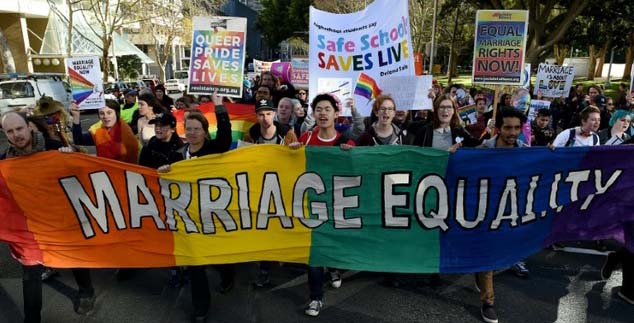
A commonly stated goal
among these movements is social equality for LGBTQ
people. But there is still denial of full LGBTQ rights
and there is much work still to be done. Some have also
focused on building LGBTQ communities or worked towards
freedom for the broader society from biphobia,
homophobia, and transphobia. There is a struggle for
LGBTQ rights today. LGBTQ movements organized today are
made up of a wide range of political activism and
cultural activity, including lobbying, boycotts,
parades, street marches, protest rallies, social groups,
concerts, film, art, media, journalism, and research.
Miss Major Griffin-Gracy,
Stonewall Activist, Has Died
NYC, San Francisco, and Other US
Cities Cap Pride Month With a
Mix of Party and Protest
Protesting Anti-LGBTQ Protesters with Conga Line
Stunning Photo of Courageous Boy
American Dream: Song by Raye Zaragoza
Hungary's LGTBQ Community Defies Government Ban to March
in Budapest Pride
92 Year Old Woman Holds Same Sign for 30 Years
Powerful LGBTQ Activism
Quotes
Zach Wahls' Speech to Iowa House of Rep
Info: Black Lives Matter
Dance Party Protest
What's Going On (Marvin Gaye): Playing
For Change Feat. Sara Bareilles
Brief Photo History of Queer Pride and
Protest
Info: Black Lives Matter
Is Pride a Protest or a Party?

Stand Up and Fight
"Out of the closet
and into the streets."
-Queer Nation
"Burst
down those closet doors once and for all. And stand up
and start to fight."
-Harvey Milk
"A right delayed is a
right denied."
-Martin Luther King Jr
"Protest
beyond the law is not a departure from democracy. It is
absolutely essential to it."
-Howard Zinn
"When
injustice becomes the law, resistance becomes a duty."
-Thomas Jefferson
Protest March
LGBTQ Celebrities Speaking Out Against ICE
Young Protester Speaks Out
Pride is More Than a Parade
Sylvia Rivera and Marsha P Johnson: Street Transgender
Action Revolutionaries
Advocates Rally Nationwide for LGBTQ
Rights: We Have Had Enough
March March: Protest Song by The Chicks
Meet the Parasol Patrol: Volunteer Group
Protecting LGBTQ Events
Pride Started With Protest
Raquel Willis: On Marsha P Johnson
Billy Porter and Stephen
Stills Perform at Dem National Convention
With Over 100 Anti-LGBTQ Bills, Activists Say They're Fired Up
What Today's Activists Can Learn from
AIDS Advocacy Group ACT UP
Pride Started With a Riot: Remembering Stonewall
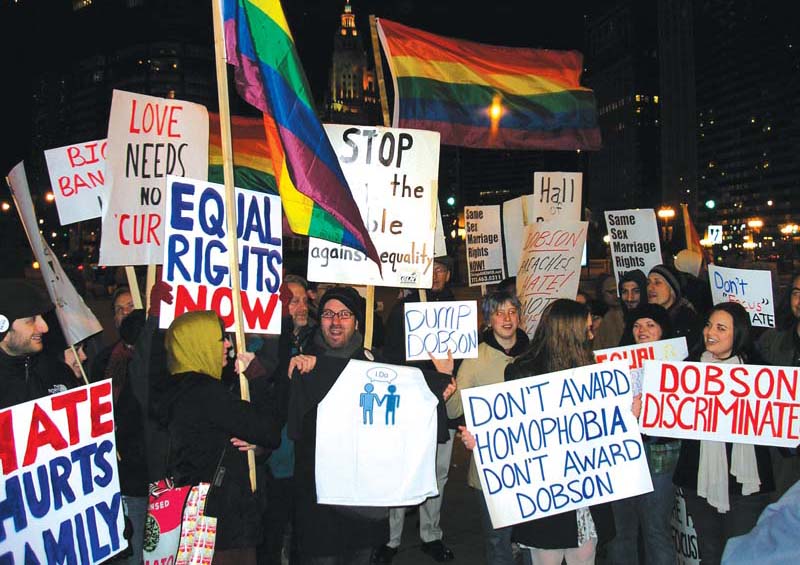

Together We Are
Powerful
American Dream: Song by Raye Zaragoza
Pride Started With a Riot: Remembering Stonewall
Info: LGBTQ Activist Organizations
APA: History of LGBTQ Social Movements
LGBTQ Revolution
Pride is More Than a Parade
Info: Women's
March
"I believe in social
dislocation and creative trouble. We need, in every
community, a group of angelic troublemakers."
-Bayard Rustin
"It takes no
compromise to give people their rights. It takes no
money to respect the individual. It takes no political
deal to give people freedom. It takes no survey to
remove repression."
-Harvey Milk
"It takes some
intelligence and insight to figure out you're gay and
then a tremendous amount of balls to live it and to live
it proudly."
-Jason Bateman
"Love wins!"
-Rob Bell
"Will we be extremists
for hate or will we be extremists for love? Will we be
extremists for the preservation of injustice? Or will we
be extremists for the cause of justice?"
-Martin Luther King Jr, Letter from Birmingham Jail
"We're here!
We're queer! Get used to it!"
-Queer Nation

Young Protester Speaks Out
Goal of the Powerful is to Extinguish our Light: Joy
is Protest, Celebration is Dissent
Irrelevant by Pink
Pride Started With Protest
Americans by Janelle Monae
Gay Pride Signs
NBC News: Pride March Turns Into Protest
LGBTQ Protests: In Praise
of Gay Bars
Sylvia Rivera and Marsha P Johnson: Street Transgender
Action Revolutionaries
Miss Major Griffin-Gracy, Stonewall Activist, Has Died
"We must fix what
ain't right in our society."
-Dorothy Cotton
"Being gay is like
glitter. It never goes away."
-Lady Gaga
"By any measure, LGBTQ
people are targets of discrimination in employment,
housing, and public accommodations. More people are
being murdered because of their sexual orientation than
for any other bias reason. Our young people are still
routinely bullied in schools. The examples of injustices
in the area of partner and family recognition are too
many to list. America is in the midst of another ugly
chapter in its struggle with the forces of bigotry.
People of good will can either rise up to speak for
lesbian, gay bisexual and transgender Americans, or look
back upon themselves 20 years from now with deserved
shame."
-Matt
Foreman, NGLTF Executive Director
"It is certain, in any
case, that ignorance, allied with power, is the most
ferocious enemy justice can have."
-James Baldwin
“When the power of love
overcomes the love of power, the world will know peace.”
-Jimi Hendrix
Gay Lesbian Straight
Education
Network
Parents & Friends of
Lesbians &
Gays
Gay Lesbian Alliance
Against Defamation
Gay Lesbian Straight
Education
Network
National LGBTQ
Task Force
Human Rights Campaign
Southern Poverty
Law Center
Campus Pride
Trevor
Project


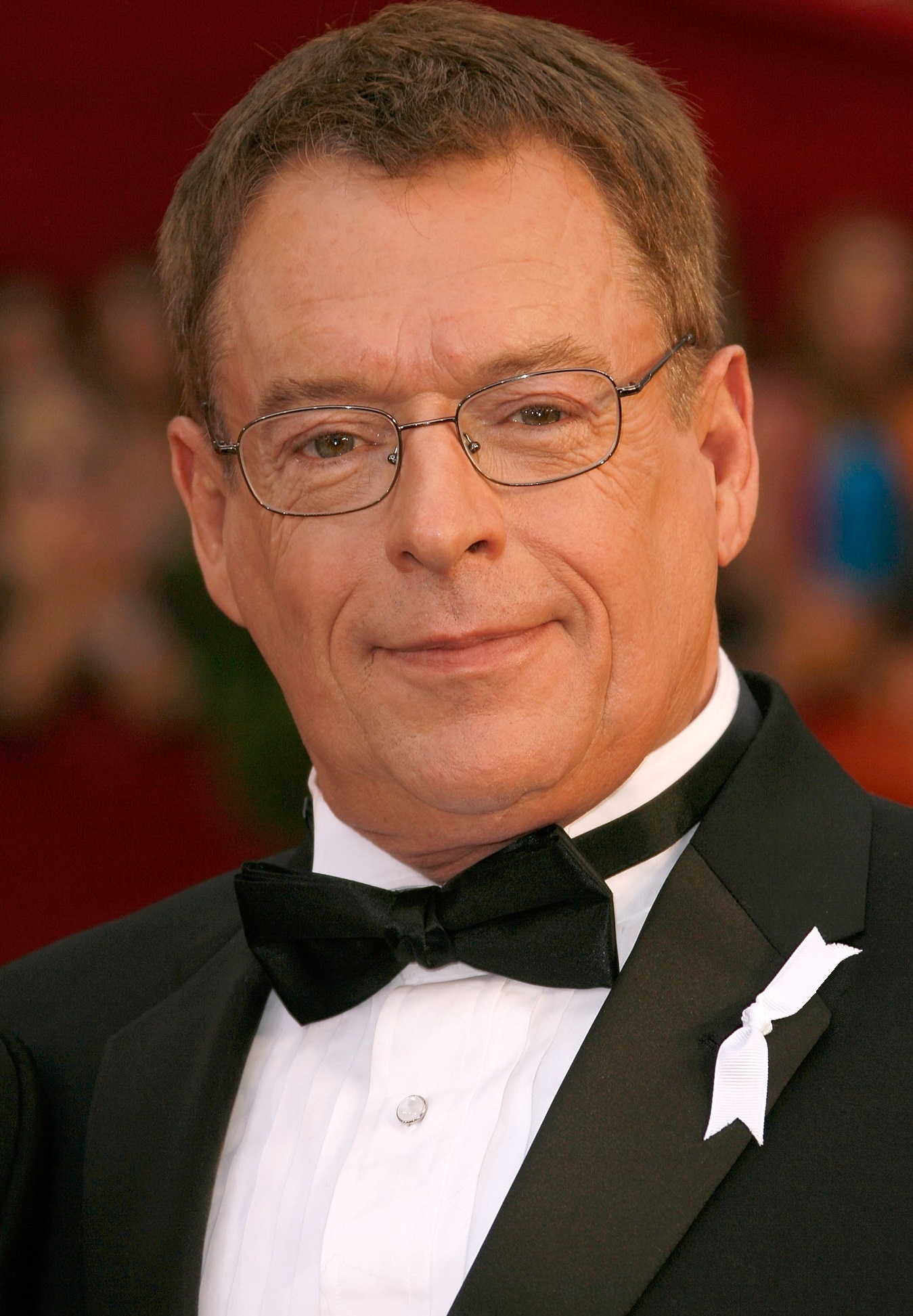
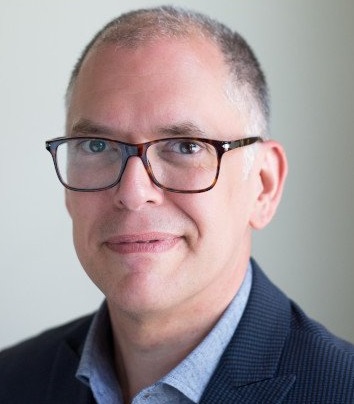


LGBTQ Activists
Harvey Milk - US Gay Rights Activist
Frank Kameny - Grandfather of US Gay Rights Movement
Bayard Rustin
- US Civil Rights Activist w MLK
Angela Davis - US Political Activist
Larry Kramer - US Playwright and AIDS Activist
Cleve
Jones - US LGBTQ and AIDS Activist, Founder of AIDS
Quilt
Candace Gingrich - US Gay Rights Activist
Kate Kendell - NCLR Executive Director
Ruth Ellis - US Civil Rights Activist
Barbara Gittings - US Gay Rights Activist
Kate Bornstein
- US Writer and Activist
Susan B Anthony
- US Women's Suffrage Activist
Sarah McBride - US Trans Rights Activist
Jazz
Jennings - US Trans Rights Activist
David Kato
Kisule - US Teacher, Human Rights Activist
George
Bellinger Jr - US AIDS Activist
Marsha P
Johnson - Stonewall
Rebellion Activist
Sylvia
Rivera - Stonewall Rebellion Activist
Miss Major
Griffin-Gracy - Stonewall Rebellion Activist
Alicia
Garza - Co-Founder of Black Lives Matter
Protest March
LGBTQ Celebrities Speaking Out Against ICE
Indigo Girls: Go (March for Our Lives)
Black Lives Matter: Peaceful Demonstrations
Raquel Willis: On Marsha P Johnson
LGBTQ Pride Festivals
Become Black Lives Matter Protests
Merging of Two Movements: LGBTQ Pride and Black Lives
Matter
When Black Lives Matter
Meets LGBTQ Pride
LGBTQ Social Movements
Sylvia Rivera and Marsha P Johnson: Street Transgender
Action Revolutionaries
Lessons From
Stonewall for LGBTQ People Today
Sam Cooke: A Change is
Gonna Come
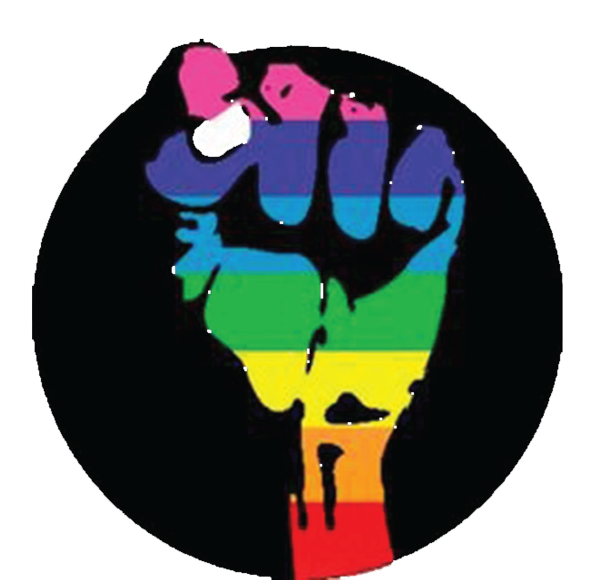
LGBTQ Activism
People who engage in
civil disobedience should understand the risks involved,
and most do. As a long-time political organizer from the
1960s onward, as an anti-war, LGBTQ, anti-racism, social
justice activist, I have studied the philosophies and
strategies of the abolitionist, suffrage and first-third
wave feminist, union workers, civil rights, and other
progressive movements.
For example, we in ACT UP
(AIDS Coalition to Unleash Power) conducted highly
visible demonstrations, often involving acts of
nonviolent civil disobedience in which we on occasion
placed ourselves at risk for arrest and even injury. ACT
UP New York, as an early example, staged a sit-in on
Wall Street in 1987 during rush hour to protest price
gouging by pharmaceutical companies for antiviral drugs.


NPR: From Pride to Protest at LGBTQ Parades
Teach Your Children by Crosby, Stills, Nash & Young
NBC News: Pride March Turns Into Protest
These Artworks Captured the Aftermath of Stonewall
Pride Is a Protest: This Year, London Lived Up To That
Goal of the Powerful is to Extinguish our Light: Joy
is Protest, Celebration is Dissent
Brief Photo History of Queer Pride and
Protest
March March: Protest Song by The Chicks
Ian McKellan Reading
Harvey Milk's Hope Speech
Indigo Girls: Go (March for Our Lives)
Info: Women's
March
American Dream: Song by Raye Zaragoza
Together We Are
Powerful
Our purpose was not to
make nice. It was, rather, to make people
uncomfortable and angry. We wanted to cause
inconvenience by waking people up to realities around
us. We challenged not only the status quo, but the
complacency and, yes, the collusion of the so-called
bystanders who would rather not have been
inconvenienced by having to face the injustices
surrounding them.
In our AIDS activism, we
not only challenged traditional means of scientific
knowledge dissemination, but more importantly, we
questioned the very mechanisms by which scientists
conducted research, and, therefore, we helped redefine
the very meaning of science.


The legislative tactics
used by an increasing number of states to discourage
nonviolent peaceful protest will have the reverse effect
since it will empower increasing numbers of people to
stand up to these injustices.
Joining together with my remarkable, dedicated, and
steadfast friends in acts of civil disobedience has
continually made real for me Margaret Mead’s insightful
and stirring statement: Never
doubt that a small group of thoughtful, committed
citizens can change the world; indeed, it’s the only
thing that ever has.
[Source: Warren J.
Blumenfeld, LGBTQ Nation]
Young Protester Speaks Out
Powerful LGBTQ Activism
Quotes
Miss Major Griffin-Gracy, Stonewall Activist, Has Died
What's Going On (Marvin Gaye): Playing
For Change Feat. Sara Bareilles
ABC News: Pride Marches Marked by Protests
LGBTQ Movements in the United States
YouTube: New York City Pride Parade Highlights
Rainbow Riots: Freedom
The
Activism of Harvey Milk
Sylvia Rivera and Marsha P Johnson: Street Transgender
Action Revolutionaries
Reuters: Washington DC Gay Pride Draws Thousands
Info: LGBTQ Activist Organizations
LGBTQ Revolution
Rainbow Riots: Equal Rights

Gay Liberation
On June 27, 1969, New
York's Stonewall Inn bar was raided by police, launching
the now-famous Stonewall Riots. This event is said to
have been the beginning of the movement for Gay Rights
or Gay Liberation.
The Gay Liberation
movement of the late 1960s through the mid-1980s urged
lesbians and gay men to engage in radical direct action,
and to counter societal shame with gay pride. In the
feminist spirit of the personal being political, the
most basic form of activism was an emphasis on coming
out to family, friends, and colleagues, and living life
as an openly lesbian or gay person. In this period,
annual political marches through major cities, usually
held in June (to commemorate the Stonewall uprising),
were still known as "Gay Liberation" marches.


Pride Started With Protest
Chicago Tribune: Gay Pride Parades Across the Nation
How Harvey Milk Changed the Gay Rights Movement
Pride is More Than a Parade
NYC Police Apologize for Raid on Stonewall Inn
Info: LGBTQ Pride Parades
Pride Started With a Riot: Remembering Stonewall
Raquel Willis: On Marsha P
Johnson
It wasn't until later in
the seventies (in urban gay centers) and well into the
eighties in smaller communities, that the marches began
to be called "gay pride parades." The movement involved
the lesbian, gay, bisexual, transgender, and queer
communities in North America, South America, Western
Europe, Australia, and New Zealand.
Gay Liberation is also
known for its links to the counterculture of the time,
to groups like the Radical Faeries, and for the gay
liberationists' intent to transform or redefine
fundamental institutions of society such as gender and
the nuclear family. In general, the politics were very
radical. In order to achieve such liberation,
consciousness raising and direct action were employed.

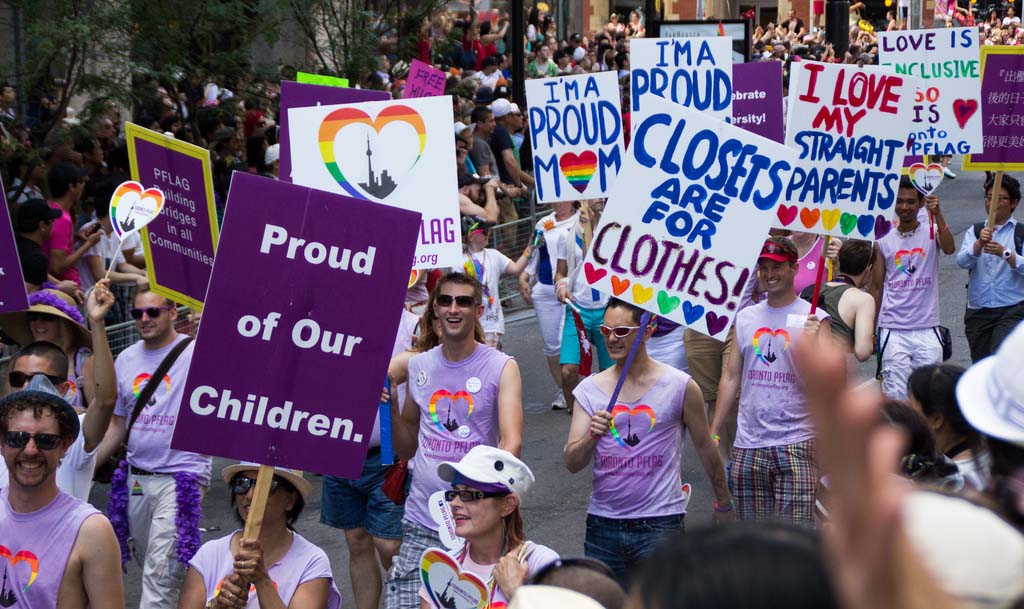
While HIV/AIDS activism
and awareness (in groups such as ACT UP) radicalized a
new wave of lesbians and gay men in the 1980s, and
radical groups have continued to exist, by the early
1990s the radicalism of Gay Liberation was becoming
eclipsed in the mainstream by newly-out, assimilationist,
white gay men who stressed civil rights and mainstream
politics.
Wikipedia: Stonewall Riots (New York)
Stonewall Riots: Beginning of the LGBTQ
Movement
NYC Police Apologize for Raid on Stonewall Inn
Things
You Missed in History: What Was the Compton’s Cafeteria
Riot?
Wikipedia: Compton’s Cafeteria Riot (San Francisco)
Before the Riot at Stonewall, There Was a Sit In at
Dewey's
Brief Photo History of Queer Pride and
Protest
Miss Major Griffin-Gracy, Stonewall Activist, Has Died
Acting Up to Fight AIDS
ACT UP was formed in
1987, at the The Lesbian, Gay, Bisexual & Transgender
Community Center in New York. The writer Vito Russo
wrote at the time that "living with AIDS in this country
is like living through a war that's happening only for
those people in the trenches. Every time a shell
explodes you look around to discover that you've lost
more of your friends. But nobody else notices, it isn't
happening to them."
Larry Kramer had been
asked to speak at the Lesbian and Gay Community Center
as part of a rotating speaker series, and his
well-attended speech focused on action to fight AIDS.
Kramer spoke out against the Gay Men's Health Crisis (GMHC),
which he perceived as politically impotent. Kramer had
actually co-founded the GMHC but had resigned from its
board of directors in 1983. According to Douglas Crimp,
Kramer posed a question to the audience: "Do we want to
start a new organization devoted to political action?"
The answer was "a resounding yes." Approximately 300
people met two days later to form ACT UP.


ACT UP
Chronology: Actions and Accomplishments
ACT UP Changed Everything
ACT UP:
AIDS Coalition to Unleash Power
Lessons From the AIDS Fight
They became
confrontational about the government's complete lack of
urgency towards the plight of the thousands of Gay men
dying of AIDS. That was the face of AIDS at the time and
no one seemed to care that so many were dying. And many
were actively blocking (as many still do) the use of
condoms for AIDS prevention. They called out Ronald
Reagan and Cardinal O'Connor and Pope John Paul for
their responsibility in the deaths of millions while
they prevented treatment and prevention. Because of ACT
UP, political leaders and the media were forced to pay
attention to what was happening. Because of ACT UP
things moved for the care and treatment of people living
and dying with AIDS.
Anthony Fauci was one of the main targets. On the
passing of Larry Kramer last year, Fauci write an
appreciation of his friend, "Back then, I was the
scientist leading the AIDS effort at the National
Institutes of Health. To him, I was the face of the
federal government. He decided the best way to bring
attention to all of this was to come out and attack me —
which he did publicly and in a somewhat vicious manner.
He wrote an article I laugh about now, but it was on the
front page of the magazine section of the San Francisco
Examiner: an open letter to an incompetent idiot Dr.
Anthony Fauci. He called me a murderer for being
negligent about HIV. That shocked me a bit, but it got
me to think that I needed to know a little more about
this guy. So I reached out — and over the years we went
from acquaintances who were adversarial to acquaintances
who were less adversarial to friends to very, very dear
friends."
The work is not finished and the ACT-UP model is one
that has been replicated by many dealing with entrenched
hostility and animus."
Lessons From
Stonewall for LGBTQ People Today
Indigo Girls: Go (March for Our Lives)
Pride Started With Protest
American Dream: Song by Raye Zaragoza
12 Year Old Mexican Boy Faces Down Protesters During
March
I Wish I Could Have Been That Brave Kid
Info: Black Lives Matter
Brief Photo History of Queer Pride and
Protest
Stunning Photo of Courageous Boy
Together We Are
Powerful

Stonewall Riots
The Stonewall riots were
a series of spontaneous, violent demonstrations by
members of the LGBTQ community against a police raid
that took place in the early morning hours of June 28,
1969, at the Stonewall Inn, located in the Greenwich
Village neighborhood of Manhattan, New York City. They
are widely considered to constitute the single most
important event leading to the gay liberation movement
and the modern fight for LGBTQ rights in the United
States.
Gay Americans in the
1950s and 1960s faced an anti-gay legal system. Early
homophile groups in the US sought to prove that gay
people could be assimilated into society, and they
favored non-confrontational education for homosexuals
and heterosexuals alike. The last years of the 1960s,
however, were very contentious, as many social movements
were active, including the African American Civil Rights
Movement, the Counterculture of the 1960s, and antiwar
demonstrations. These influences, along with the liberal
environment of Greenwich Village, served as catalysts
for the Stonewall Riots.


Very few establishments
welcomed openly gay people in the 1950s and 1960s. Those
that did were often bars, although bar owners and
managers were rarely gay. At the time, the Stonewall Inn
was owned by the Mafia. It catered to an assortment of
patrons and was known to be popular among the poorest
and most marginalized people in the gay community: drag
queens, transgender people, effeminate young men, butch
lesbians, male prostitutes, and homeless youth. Police
raids on gay bars were routine in the 1960s, but
officers quickly lost control of the situation at the
Stonewall Inn. They attracted a crowd that was incited
to riot. Tensions between New York City police and gay
residents of Greenwich Village erupted into more
protests the next evening, and again several nights
later. Within weeks, Village residents quickly organized
into activist groups to concentrate efforts on
establishing places for gays and lesbians to be open
about their sexual orientation without fear of being
arrested.
Pride Started With a Riot: Remembering Stonewall
PFLAG Founder Dies
Miss Major Griffin-Gracy,
Stonewall Activist, Has Died
Sylvia Rivera and Marsha P Johnson: Street Transgender
Action Revolutionaries
Jeanne Manford Raised the Flag for Intolerance
Pride Is a Protest: This Year, London Lived Up To That
Pride is More Than a Parade
Goal of the Powerful is to Extinguish our Light: Joy
is Protest, Celebration is Dissent
Ian McKellan Reading
Harvey Milk's Hope Speech


After the Stonewall
Riots, gays and lesbians in New York City faced gender,
race, class, and generational obstacles to becoming a
cohesive community. Within six months, two gay activist
organizations were formed in New York, concentrating on
confrontational tactics, and three newspapers were
established to promote rights for gays and lesbians.
Within a few years, gay rights organizations were
founded across the US and the world. On June 28, 1970,
the first Gay Pride marches took place in New York, Los
Angeles, San Francisco and Chicago commemorating the
anniversary of the riots. Similar marches were organized
in other cities. Today, Gay Pride events are held
annually throughout the world toward the end of June to
mark the anniversary of the Stonewall Riots.
92 Year Old Woman Holds Same Sign for 30 Years
Teach Your Children by Crosby, Stills, Nash & Young
The
Activism of Harvey Milk
Zach Wahls' Speech to Iowa House of Rep
Powerful LGBTQ Activism
Quotes
Dance Party Protest
Info: Women's
March
ACT
UP Changed Everything
The HIV/AIDS protest
group was the first great leap for the queer movement
after Stonewall. In the years following Stonewall,
diverse and vibrant queer cultures flourished, not
necessarily hidden, but unknown to most straight people.
AIDS devastated those communities, brutally killing so
many and unleashing relentless attacks from religious
and governmental homophobes.
Queer people responded by establishing social-service
organizations and all varieties of care and support
groups, but it was ACT UP that challenged the homophobic
regime and forced the changes necessary to mitigate the
AIDS crisis. ACT UP was the first great leap for the
queer movement after Stonewall.
Although much political work was done from 1969 to 1987,
ACT UP transformed queer organizing. Like any other
activist group, ACT UP did not always live up to its
best ideals, but its members encouraged, coaxed, and
cajoled each other into fighting every day to make the
change necessary to end the AIDS crisis.
I don’t think you can
exaggerate the strength gained from lesbians, gay
men, trans people, straight women, and a few
straight men working together, learning from one
another the wisdom of previous struggles. No doubt
the most important experience came from the women’s
movement and especially the feminist health
movement, which understood the systems of oppression
against women, people of color, and queer people
endemic to the US health-care system. ACT UP made
“health care is a right” into a mainstream idea,
even if that concept is still being challenged 30
years on.

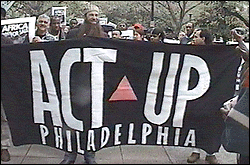
March March: Protest Song by The Chicks
What Today's Activists Can Learn from
AIDS Advocacy Group ACT UP
Billy Porter and Stephen
Stills Perform at Dem National Convention
Brief Photo History of Queer Pride and
Protest
LGBTQ Protests: In Praise
of Gay Bars
Thousands Gather for BLM and LGBTQ Pride March
Sylvia Rivera and Marsha P Johnson: Street Transgender
Action Revolutionaries
The care and creativity that went into designing posters
and the cleverness that brought forth so many memorable,
delightful chants altered the way demonstrations looked
and sounded. Leadership was fluid; new people stood up
as people died or exhausted themselves. Education within
the movement was also democratized, so that everyone
could be a spokesperson, not just a small elite. Ideas
and needs arose from the membership, not imposed by
leadership. The result was that ACT UP responded to the
needs of the many, not to the needs of the elite. This
is all very queer.
ACT UP brought real power to queer people for the first
time. The events and subsequent grassroots political
action that we now refer to as Stonewall brought
visibility and self-esteem. Stonewall may have been more
important for the changes it brought to the community
than to the changes it made to the larger society. ACT
UP, in contrast, changed the whole country. For the
first time, the general public saw queer people as
determined, strong, smart, articulate, and having a
modicum of power.
Finally, ACT UP made
gay sex joyous again. AIDS had re-stigmatized gay
sex and provided our right-wing and homophobic
enemies the ammunition to assault the queer
community. The attacks were against the entire queer
community—the homophobes did not care that lesbians
rarely got AIDS. They were determined to obliterate
our progress against heterosexual domination.
ACT UP was successful, but its fight didn’t end.
Today HIV/AIDS is too often ignored as a problem of
the past. Too many people are still being forgotten,
especially people of color and trans people, and do
not get the health care they need. The availability
of pre-exposure prophylaxis, better known as PrEP,
is not democratized. And people with HIV/AIDS are
being criminalized and thrown in jail.
March March: Protest Song by The Chicks
Info: LGBTQ Activist Organizations
APA: History of LGBTQ Social Movements
Gay Pride Signs
American Dream: Song by Raye Zaragoza
Pride Started With Protest
These Artworks Captured the Aftermath of Stonewall
How Harvey Milk Changed the Gay Rights Movement


The elite, more conservative elements of the gay
movement hijacked the success of AIDS activism to push
for gay marriage and gays in the military. Gay marriage
has become the new closet. It promotes a desexualized,
normalized, contained, and controlled married gay person
that straight people can be comfortable with. LGBTQ
people have the right to marry and to fight in the
military, but not the right to be queer.
ACT UP made progress, because it offered specific
solutions to particular problems. Its actions engaged
with the most profoundly intimate of subjects: sex,
caregiving, and death. The challenges of the future
(climate change, plutocracy, racism, homophobia,
misogyny) will require different types of radical
change, but it must include a commitment to sexual
liberation.
[Source: Jim
Hubbard, June 2019, Filmmaker, United in Anger: A
History of ACT UP]
Indigo Girls: Go (March for Our Lives)
Americans by Janelle Monae
Goal of the Powerful is to Extinguish our Light: Joy
is Protest, Celebration is Dissent
Black Lives Matter: Peaceful Demonstrations
LGBTQ Pride Festivals
Become Black Lives Matter Protests
Merging of Two Movements: LGBTQ Pride and Black Lives
Matter
When Black Lives Matter
Meets LGBTQ Pride
Remembering the
Early Pioneers
Photo Left: PFLAG Moms, Mrs. Elizabeth Montgomery and
Mrs. Jean Manford, show their support during the 1974
Pride Day Parade in New York City. Photo Right: PFLAG
Dad, Dick Ashworth, a founding member of Parents and
Friends of Lesbians and Gays (PFLAG,) marching on June
3, 1974.

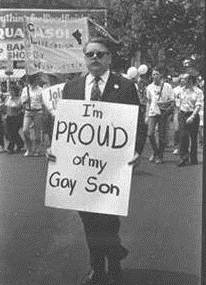
In 1972,
Morton Manford was physically attacked at a gay rights
demonstration in New York. Morty’s parents, Jeanne and
Jules Manford, saw the attack on a local newscast and
witnessed the failure of the police to intervene. Their
outrage turned them into activists. The concept of PFLAG
began in 1972 when Jeanne Manford marched with her gay
son in New York’s Pride Day parade. After many gay men
and lesbians ran up to Jeanne during the parade and
begged her to talk to their parents, Jeanne decided to
begin a support group. Approximately 20 people attended
the first formal meeting held in March 1973 at a local
church.
Pride is More Than a Parade
LGBTQ Social Movements
Info: Women's
March
Brief Photo History of Queer Pride and
Protest
NPR: From Pride to Protest at LGBTQ Parades
LGBTQ Revolution
Together We Are
Powerful

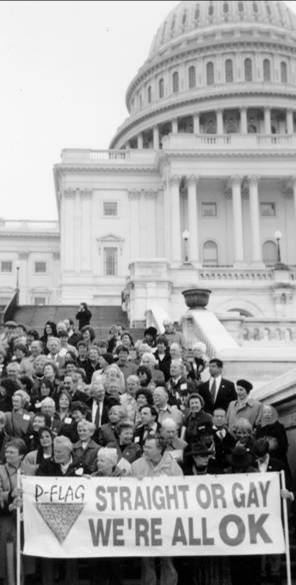
In the
next years, through word of mouth and in response to
community need, similar groups sprung up around the
country, offering “safe havens” and mutual support for
parents with gay and lesbian children. Following the
1979 National March for Gay and Lesbian Rights,
representatives from these support groups met for the
first time in Washington, DC. In 1981, members decided
to launch a national organization. The first PFLAG
office was established in Los Angeles under founding
President Adele Starr.
In 1982,
the Federation of Parents and Friends of Lesbians and
Gays (PFLAG), then comprising some 20 groups, changed
from a federation to a membership-based organization and
was incorporated in California and granted non-profit,
tax-exempt status. In 1990, following a period of
enormous growth, PFLAG hired an Executive Director,
expanded its staff, and consolidated operations in
Washington, DC. In 1993, the word “Families” was added
to the name.
NBC News: Pride March Turns Into Protest
Sylvia Rivera and Marsha P Johnson: Street Transgender
Action Revolutionaries
NYC Police Apologize for Raid on Stonewall Inn
Info: LGBTQ Pride Parades
What's Going On (Marvin Gaye): Playing
For Change Feat. Sara Bareilles
LGBTQ
Nation: Protest News
Life Lessons I've Learned From an LGBTQ Activist
Info: Black Lives Matter
Pride Started With a Riot: Remembering Stonewall
The
Activism of Harvey Milk
Is Pride a Protest or a Party?
Teach Your Children by Crosby, Stills, Nash & Young
American Dream: Song by Raye Zaragoza

HOME
QUEER CAFE
│ LGBTQ Information Network │ Established 2017
|